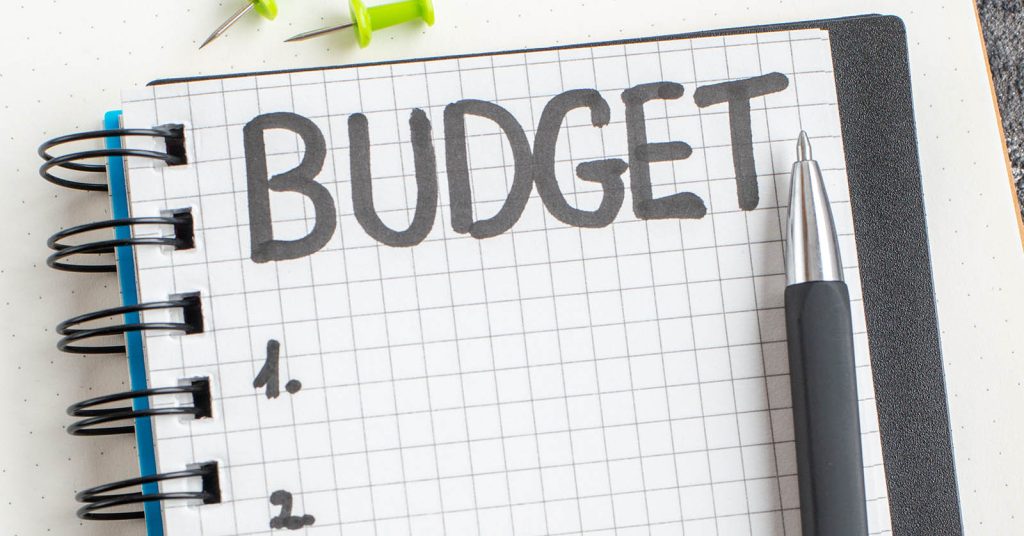Frugal living in 2025 isn’t about deprivation or collecting dozens of hacks — it’s about a few durable systems that lower bills, protect your cash, and keep you on track when life gets busy. Inflation has cooled versus 2022–23, but it’s still present, and some line items (like motor vehicle insurance and certain services) remain elevated. That’s why the biggest wins this year come from (1) automating money flows so savings happen by default, (2) using tax-advantaged accounts and federal energy credits that still run through 2025, (3) making idle cash earn, (4) re-shopping expensive recurring costs, and (5) adapting your grocery and transportation habits to current price levels. What follows is a prioritized blueprint with current U.S. numbers, a pair of quick tables, and practical examples. Standards & citations are included so every figure is verifiable. The goal isn’t to micromanage every purchase — it’s to change the plumbing so your baseline costs permanently drop while quality of life stays high.
Key Takeaways
- Automate first, then optimize: send money to savings/investing before it hits checking; add 1–2% auto-escalators each quarter.
- Use 2025 tax breaks while they last: home energy credits up to $3,200/year (30% of qualified costs) run through 12/31/2025.
- Make cash pull its weight: top HYSAs pay ~5% APY (late 2025); spread balances to stay within FDIC limits $250k per depositor, per bank, per ownership category.
- Groceries: benchmark a realistic monthly target against the USDA Thrifty Food Plan to make a plan you can actually follow.
- Keep an eye on energy & transport: fuel costs and utility rates swing — use efficiency credits and planning (carpool, transit, route batching) to blunt volatility.
1) Build a Frugal System, Not a To-Do List (Automation & Defaults)
The most reliable way to spend less is to see less discretionary cash hitting checking. Arrange payroll splits so fixed percentages auto-land in a high-yield savings account (HYSA) for your emergency fund and in tax-advantaged accounts (401(k)/IRA/HSA) before you can spend them. Layer a 1%–2% quarterly auto-escalation on both savings transfers and retirement contributions; you won’t miss what never shows up in spending. Next, set minimum autopay on every card to prevent late fees and credit dings, then schedule a second manual payment for the real payoff amount. Align bill due dates to just after payday so you don’t bridge expenses on credit. For accountability, make a one-page “money map” that lists where each dollar lands on payday and when it moves out again — this replaces willpower with plumbing. Finally, give yourself one “frictionless” spend category (e.g., coffee or hobbies under a small weekly cap) so you don’t rebound into bigger splurges; good frugality feels sustainable, not punitive. The macro backdrop matters (CPI inflation eased to ~2.9% year-over-year by August 2025), but your personal inflation depends mostly on your systems.
2) Slash Energy & Utility Bills (and Use 2025 Credits While You Can)
Home energy is one of the few big household costs you can attack from two angles — consumption and taxes. First, do the low-friction basics: thermostat scheduling, weather-sealing/insulation, LED bulbs, smart power strips, and water-heater temperature checks; these cut usage with little behavior change. Second, harvest federal tax credits that run through December 31, 2025. The Energy Efficient Home Improvement Credit (IRC §25C) covers 30% of qualified costs (caps apply) up to $3,200/year for improvements such as heat pumps, envelope upgrades, and electrical panel work. Keep receipts and manufacturer certification statements and file Form 5695 at tax time. Stack credits with any state/utility rebates for best effect. Because energy markets can be volatile, efficiency upgrades give you a “guaranteed return” in lower kWh/therms for years. If you rent, focus on portable wins: LED bulbs, aerators, draft stoppers, smart plugs on schedules, and a clear “no vampire power” setup for entertainment gear. Put calendar reminders for seasonal filter changes and set your heat/cool setpoints before rate peaks. These routines reduce your bill regardless of price levels and are the most frugal dollars you’ll spend this year.
3) Make Your Cash Earn (HYSA, CD Ladder, I-Bonds) and Keep It Safe
Idle cash should earn a competitive yield, especially with inflation near the high-2s in late 2025. Keep your emergency fund in a FDIC-insured HYSA and consider layering a simple CD ladder (e.g., 3–6–12–18 months) for funds you can lock, so part of your cash always renews at current rates. Review APYs quarterly; switching is easy via ACH. Follow the safety rule: FDIC insurance covers $250,000 per depositor, per bank, per ownership category (you can multiply coverage by using different ownership categories or multiple banks). Credit unions provide similar federal protection via NCUA. For inflation-hedged cash you won’t need for 12 months, consider Series I Savings Bonds (rates reset every six months from your purchase date); compare the current composite rate and your timeline to HYSA/CD yields. Document accounts and maturities in one page so renewals don’t slip, and set alerts for rate cuts. The frugal mindset isn’t “never spend” — it’s “never leave money idle or unprotected.”
4) Food: How to Spend Less Without Eating Worse (Use the USDA as Your Benchmark)
Groceries are where frugal habits show up weekly, and using an objective benchmark keeps goals realistic. The USDA’s Thrifty Food Plan (TFP) publishes monthly cost estimates for nutritionally adequate diets; use the latest report to set a household target that matches your age/size mix, then build a rotating two-week menu around loss leaders and seasonal produce. Shop with a list, batch-cook “base” ingredients (grains/beans/proteins), and reserve convenience items for truly busy weeks so you don’t default to pricier takeout. Buy store brands on staples, and treat unit price (per ounce/lb) as your true comparison; big packages aren’t always cheaper. Use a strict “one treat per trip” rule to keep extras controlled rather than banned. If you’re learning to cook, pick five simple, repeatable dinners and master those first; variety comes later. Finally, accept that prices move — anchoring your expectations to last year’s receipt only frustrates you. A USDA-anchored budget keeps you honest about what’s achievable in your region and lets you measure progress without guesswork.
5) Transportation: Tame the Big Costs You Don’t See (Fuel, Insurance, Shipping)
Commuting patterns, insurance, and small logistics choices compound over a year. Combine trips into a single route, maintain proper tire pressure, and remove roof racks when not in use to improve fuel economy; volatile gas prices make efficiency gains valuable (the EIA publishes weekly national averages so you can plan fill-ups before holiday spikes). Re-shop auto insurance yearly — insurers price by risk tiers, and changes to mileage, garaging, or credit-based insurance scores can move your premium even if you didn’t switch cars; get multiple quotes at renewal and ask your current carrier to match. For shipping books or heavy media, use USPS Media Mail instead of retail parcel rates when eligible (it’s slower, but the cost floor is much lower). If you live near transit, experiment with a “one less car day” each week; the savings stack with lower parking, fewer washes, and slower tire/brake wear. None of these steps requires lifestyle overhaul; they convert hidden line items into predictable, smaller bills you can budget around.
6) Subscriptions, Insurance, and Bills: Re-Shop, Rotate, and “Audit by Calendar”
Frugality improves fastest when you remove waste that auto-renews. Once a quarter, export your last 90 days of card/bank transactions to a spreadsheet; mark anything you wouldn’t buy again today, then cancel or downgrade. Rotate streaming services instead of keeping them all year; keep one “family favorite” always on and rotate the others monthly. For mobile service, check MVNO plans that ride the big networks at lower prices; many let you trial eSIMs without commitment. With insurance (auto/home/renters), build a policy snapshot — coverages, deductibles, and current premium — then shop three quotes apples-to-apples; an honest look at deductibles often reveals you’re over-insuring small risks while under-insuring big ones. Add a note in your calendar two weeks before each policy renewal to shop; the reminder is the frugal part. Finally, review your credit reports free at AnnualCreditReport.com (the bureaus have permanently extended weekly free checks) — billing errors and identity-related issues are easier to fix early than after fees stack up.
7) Make Frugality Visible (Checklists, Buckets, and Simple Targets)
Frugality sticks when it’s visible. Keep a one-page monthly plan with four buckets: Must-Pay (rent/mortgage, utilities, minimum debt), Grow (HYSA/401(k)/IRA/HSA contributions), Ops (groceries, fuel, insurance, transit), and Fun (everything else). Put dollar targets next to each bucket and update once per week. Add a small “friction” step — like a 24-hour cooling-off rule — before non-essential purchases over a threshold you choose. Track three numbers only: (1) savings rate (Grow ÷ take-home), (2) emergency-fund months (HYSA ÷ essential monthly costs), and (3) debt payoff date(s). If results stall, raise the default (automation), not the effort (willpower). Use the tables below to prioritize moves that reliably cut costs in 2025; they’re chosen because they’re easy to execute and backed by durable rules or public data rather than coupons that expire next week.
| 2025 High-ROI Moves | What to do | Why it works |
|---|---|---|
| Claim energy credits | Use §25C (up to $3,200; 30% of qualified costs) through 12/31/2025 | Permanent bill cuts + a federal tax credit shorten payback. |
| Reprice insurance annually | Get 3 quotes on auto/home; ask current carrier to match | Pricing shifts by risk tier and market; shopping resets you to today’s curve. |
| Move idle cash | HYSA/CD ladder; keep within FDIC limits | You capture market yields and maintain federal protection. |
| USDA-anchored grocery budget | Match your household to the Thrifty Food Plan and build a 2-week cycle | Objective target + repeatable menu = fewer impulse trips. |
| Audit subscriptions | Cancel, rotate, and calendar the next review | Removes “silent” spend; keeps the frugal gains permanent. |
| Quick Win (this week) | Action | Typical result |
|---|---|---|
| Lower utility base load | Install LEDs, seal obvious drafts, set thermostat schedules | Immediate kWh/therm reduction; set up to stack with §25C upgrades. |
| Cut shipping/book costs | Use USPS Media Mail for eligible items | Much lower cost floor than retail parcel for books/media (slower delivery). |
| Reduce fuel spend | Combine errands; check EIA weekly averages before holiday travel | Fewer miles + better timing against price spikes. |
| Protect your credit (and rates) | Pull free weekly credit reports at AnnualCreditReport.com | Fix errors early; lower borrowing/insurance costs longer-term. |
Frequently Asked Questions (FAQs)
What single change saves most this year?
For homeowners, pairing basic efficiency (sealing/LEDs/thermostat scheduling) with the 2025 federal energy credits (up to $3,200, 30% of eligible costs) is the biggest durable win. Renters: automate savings first, then re-shop insurance/mobile and set a USDA-anchored grocery budget.
Are online banks safe for large cash balances?
Yes — if FDIC-insured and you stay within coverage. The FDIC covers $250,000 per depositor, per bank, per ownership category. You can increase coverage by using multiple insured banks and/or different ownership categories.
What if grocery prices spike again?
Keep a rotating pantry of low-cost staples, meal-plan around store loss leaders, and evaluate your weekly spend against the USDA Thrifty Food Plan to maintain a realistic target as prices move.
Is it still worth optimizing fuel costs if I don’t drive much?
Yes. Combine trips and check EIA’s weekly national average before longer drives; even modest efficiency gains add up over a year and don’t require new habits every day.
How often should I check my credit reports?
You’re entitled to free weekly checks at AnnualCreditReport.com — use them, especially before major purchases or insurance renewals.
Sources
- BLS — Consumer Price Index Summary (Aug 2025 ~2.9% YoY; category notes)
- IRS — Energy Efficient Home Improvement Credit (30% up to $3,200; through 12/31/2025)
- ENERGY STAR — Federal Tax Credits for Energy Efficiency (homeowner overview)
- USDA — Food Plans: Monthly Cost of Food Reports (Thrifty Food Plan)
- USDA — Thrifty Food Plan (January 2025 PDF; U.S. averages by age/sex)
- FDIC — Deposit Insurance FAQs (coverage rules)
- FDIC — Understanding Deposit Insurance (ownership categories)
- EIA — U.S. Gasoline and Diesel Retail Prices (weekly series)
- USPS — Postage Rates & Prices (Media Mail, other services)
- FTC — Free Credit Reports (weekly access via AnnualCreditReport.com)









